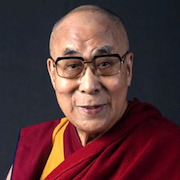Free Tibet Campaign
Free Tibet is a non-profit, non-governmental organization, founded in 1987 and based in London, England. FT, according to their mission statement, advocates for “a free Tibet in which Tibetans are able to determine their own future and the human rights of all are respected.”The Legal Status of Tibet. Recent events in Tibet have intensified the dispute over its legal status. The People's Republic of China (PRC) claims that Tibet is an integral part of China. The Tibetan government-in-exile maintains that Tibet is an independent state under unlawful occupation.
Objective:
1. For an end to China's occupation of Tibet
2. Against Tibetan human rights abuses.
3. for international recognition of Tibetans' right to freedom.
4. to generate more support for Tibet.
5. Defend religious freedom.
Tibetan refugees have settled in India by the tens of thousands since 1959, when the Tibetan spiritual leader, the Dalai Lama, and many of his followers fled to northern India to escape a Chinese crackdown. China invaded Tibet in 1950. Inside its borders and across the world, Tibetans have never stopped believing Tibet is a nation. After more than 60 years of occupation, Tibetans still resist China's rule and defy its oppression.
 |
| 14th Dalai Lama |
The Dalai Lama is respected by people the world over. In exile, he has devolved his political power to a democratic institution and is a consistent advocate of friendship with the Chinese people and dialogue with the Chinese government. He does not seek an independent Tibet but a "Middle Way" approach which seeks greater freedom for Tibetans without independence.
Why China occupied Tibet?
Tibet is the region that serves as a buffer zone between China on one side and India, Nepal, and Bangladesh on the other. The Himalayan mountain range provides an added level of security as well as a military advantage. Tibet also serves as a crucial water source for China and possesses a significant mining industry. China’s relentless destruction of religion in Tibet saw the demise of over 6,000 monasteries and countless religious artifacts. Even today, China sees the Tibetan religion and culture as the main threat to the leadership of the Communist Party. China’s Third Work Forum on Tibet in 1994 and the Fourth Work Forum in 2001 have called for an array of measures to wipe out the vestige of Tibetan religion. The Chinese emperor assigned the Dalai Lama and Panchen Lama to be in charge of religious and political matters in Tibet. The Tibetan spiritual leader, the Dalai Lama, and many of his followers fled to northern India to escape a Chinese crackdown (Representative 20 Mar 2003) and China want to transfer its population to Tibet. The continued population transfer of Chinese to Tibet in recent years has seen the Tibetans become a minority in their own land.
In the Tibet Autonomous Region alone, 20 million to 25 million inland tourist visits have been recorded annually, putting immense pressure on the Tibetan population to speak a language that is not their own and thereby further marginalizing the use of their native tongue. Chinese government’s claim that Tibet has been part of China for around 800 years isn't supported by the facts. In 1950, the newly established Communist regime in China invaded Tibet, which was rich in natural resources and had a strategically important border with India.
When China Occupied Tibet?
In July 1949, in order to prevent Chinese Communist Party-sponsored agitation in political Tibet, the Tibetan government expelled the Chinese delegation in Lhasa. In November 1949, it sent a letter to the U.S. State Department and a copy to Mao Zedong, and a separate letter to the UK, declaring its intent to defend itself "by all possible means" against PRC troop incursions into Tibet.
In the preceding three decades, the conservative Tibetan government had consciously de-emphasized its military and refrained from modernizing. Hasty attempts at modernization and enlarging the military began in 1949 but proved mostly unsuccessful on both counts. It was too late to raise and train an effective army. India provided some military training, however, the China Army was much larger, better trained, better led, better equipped, and more experienced than the Tibetan Army.
In 1950, the newly established Chinese Communist regime decided that Tibet must become a permanent part of the People's Republic of China and launched an invasion. For China, possessing Tibet gave access to rich natural resources and allowed it to militarise the strategically important border with India.
Gedhun Choekyi Nyima, Tibet is the 11th Panchen Lama belonging to the Gelugpa school of Tibetan Buddhism, as recognized and announced by the 14th Dalai Lama on 14 May 1995. Three days later on 17 May, the 6-year-old Panchen Lama was kidnapped by the Chinese government, after the State Council of the People's Republic of China failed in its efforts to install a substitute.
Tashi Wangchuk advocated peacefully to see the Tibetan language taught in schools. He has been sentenced to 5 years in prison for "inciting separatism".
The Legal Status of Tibet. Recent events in Tibet have intensified the dispute over its legal status. The People's Republic of
China (PRC) claims that
Tibet is an integral part of China. The
Tibetan government-in-exile maintains that Tibet
is an independent state under unlawful occupation.
Free Tibet supporters have no argument with the Chinese people. They support Free Tibet because they see Tibetans as victims of the undemocratic Chinese government and see Tibetans’ unwavering struggle for freedom as a just cause.
Issues facing Tibet
1. National Independence
2. Culture and Religion
3. Population Transfer
4. Education
5. Universal Human Rights
6. Deforesting, Soil Erosion and Flooding
7. Uncontrolled Mining
8. Nuclear Waste Dumping
9. The official language is Chinese, with many Tibetan children losing their ability to speak and write Tibetan.
Hello friends, My name is Madhu Vats. Here I share my knowledge about Indian Culture, Food, and Indian History. I hope you will enjoy my content...




ConversionConversion EmoticonEmoticon